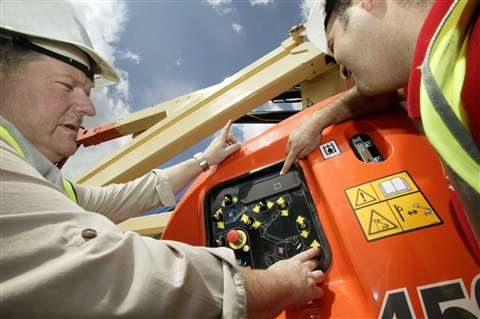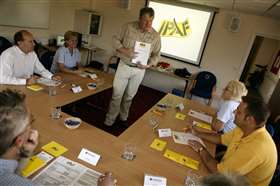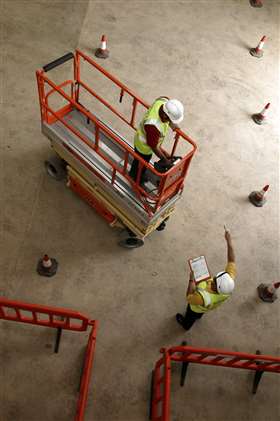Preparing for industry-wide changes
10 July 2018
Tony Groat, IPAF’s North America manager and a member of drafting committees for both the CSA and ANSI standards, looks at the impacts the new specific standards relating to training will have and how companies can get compliant.
The U.S. and Canadian rental markets have been getting to grips with new standards for the design, safe use and training of mobile elevating work platforms (MEWPs) for some time now; the CSA standards are published and now in effect with the ANSI equivalent due later this year in the U.S. Here, Tony Groat, IPAF’s North America manager and a member of drafting committees for both the CSA and ANSI standards, looks at the impacts the new specific standards relating to training will have and how companies can get compliant.
History

The first and only ANSI A92 aerial lift standard referenced by OSHA was written in 1969 and it addressed “vehicle-mounted aerial devices.” This initial standard’s primary focus was on the manufacturing of the devices; it only offered responsibilities for manufacturers and dealers; and operator training wasn’t even mentioned.
The term familiarization, defined as “providing information regarding the control functions and safety devices for the aerial platform(s) which is (are) to be operated by a qualified person,” first appeared in the A92.6 –1999 standard and was not universally used in all A92 standards until 2006.
In 2006, and still today, too many users and operators perceive that the instructions offered when a rental company delivers a lift is operator training and it is not understood as machine-specific familiarization required in addition to general operator training. In fact, earlier standards called what we know today as familiarization, “training upon deliver” that resulted in the initial confusion between the two. Hence the term for the instructions became known as “familiarization” in later standards, not training.
So, historically, when a rental company offered operator training that lasted longer than an hour for a group of workers, users thought that was fantastic training compared to what was offered and perceived as training when they dropped the machine off.
In the past, when operator training was offered that actually complied with the requirements of industry standards, users perceived the training to be excessive compared to the one-hour-plus session that was offered and accepted as operator training. Today, one-hour instructions can be considered “familiarization on steroids” but not general operator training.
Pushing operator training that was compliant with industry standards has been an uphill battle starting with the introduction of familiarization in 1999 to distinguish this information as a separate requirement from general operator training. Ongoing updates offered incremental improvements to the requirements over the years through the ANSI A92 standard revised publication.
Additionally, the training requirements were compacted into the standards with manufacturing and safe use requirements and then restated in sections by entity responsibilities.
In 2018 we will finally see a stand-alone MEWP training standard. It will have clear and detailed guidance on the methods and guidelines to prepare MEWP training materials, clear administrative criteria and delivery elements required for proper training and familiarization. Adherence with the requirement of ANSI training standard A92.24 (CSA b354.8 in Canada) is the only path to compliant operator training.
The new training standard
After many delays, the new ANSI A92.22 Training Requirements for the Use, Operation, Inspection, Testing and Maintenance of Mobile Elevating Work Platforms (MEWPs) standard is now expected to be published in September 2018. All will have 12 months after publication to become compliant with the standard, known as the effective date. The Canadian B354.8 training standard was published in May of 2017 and is in effect today.

Training content
Existing MEWP standards provide 10 issues and requirements that must be covered in general operator theory training and one addressing the hands-on practical evaluation. The new training standard identifies 23 issues and requirements and the practical evaluation defines seven specific issues and requirements that must be covered.
The primary difference is that the new standard provides detailed requirements that may not have specifically been incorporated into prior training courses. It better assures that issues will not be missed by either the theory or practical training components.
Theory training: A broad requirement to the theory course content is the requirements of MEWP safe-use as defined in the new A92.22 Safe Use of Mobile Elevating Work Platforms (MEWPs) (or CSA B354.7 in Canada). This article will not address all of the many changes in the safe use standard, but they are required to be adhered to in the operator theory course content.
Additionally, theory content must include 25 specific topics, including knowing and understanding wind hazards and weather conditions; safe traveling practices; and issues associated with transport. These are examples of topics that may not have been addressed in prior operator training that can no longer be missed out.
Practical evaluation: Prior standards simply stated that under the supervision of a qualified person the trainee must operate for a sufficient period of time to demonstrate proficiency. Who is qualified, what is a sufficient period of time and how is proficiency being measured?
The new standard requires seven specific tasks to be performed, starting with walk-around familiarization, ending with parking and securing the MEWP and all main tasks and functions of the MEWP in between. It is very comprehensive. It further offers Annexes (discussed later) that document detailed evaluations.
Occupant knowledge: Completely new is the requirement for all occupants of MEWPs to receive basic level of knowledge to work safely on the MEWP. The user shall ensure that the MEWP operator provides instruction or otherwise ensure all occupants receive this. Operator training must include the required knowledge that must be delivered to occupants. It also adds that the instruction should also provide at least one of the occupants with the knowledge to operate the controls in an emergency situation where the operator cannot.
Supervisor training: A completely new requirement in the ANSI standards, and while not a specific requirement in the Canadian standards, the B354 standards require a similar task to be performed by “qualified persons,” so the same training could apply.
The standard requires that users ensure personnel who directly supervise MEWP operators be trained on the rules, regulations and standards that apply to MEWPs, including the provisions for safe use as defined in ANSI A92.22, training and familiarization and the work being performed. On-the-job training cannot ensure all of the requirements in the standard are covered. This training will.
Administration of training
The administration of training was never specifically addressed in prior standards and most of the following is either new or have elements that are new.
Trainers: All training shall be delivered by a qualified person. This is not new, but the specific language of what they need to be qualified on is now stated: Experience with the particular classification of MEWPs; knowledge regarding the laws, regulations, safe use practices, manufacturer’s requirements; and recognition and avoidance of hazards associated with MEWPs are all required.
Language: This new requirement for the user ensures training is presented in a manner that trainees can understand. This follows an OSHA policy statement that says, “In practical terms, this means that an employer must instruct its employees using both a language and vocabulary that the employees can understand.”
Operator qualification: This is a new requirement stating the user shall ensure the operator of a MEWP is physically and mentally capable to operate the MEWP safely.
Curriculum: As stated above, administration shall ensure that the curriculum for the operator training incorporate the topics and subjects listed in the standard. The curriculum shall clearly identify that training covers only the classification for the MEWP(s) included in the training.
Training environment: This new detail states that the training area must be free from hazards and be suitable to support learning. The standard provides guidelines for both the classroom and practical training environments addressing issues such as proper lighting, ventilation and acoustics, visibility for all trainees of the presentation and a risk assessment made for each location where a practical test is to be given.
Testing: To demonstrate proficiency in both theory (classroom/online) and practical (hands‐on), the results of the theory (classroom/online) and practical (hands-on) evaluations shall be documented. Examples of such documentation are provided in the Annex (described below.)
Personal documentation: While documentation is not new, the addition of a period of time for which training is valid (if applicable) is and requires both the company and trainer’s name. An example of documentation is offered in the Annex.

Record retention: The prior standard required retention of training records for at least four years, the same for familiarization. New language states that records must be retained for at least the period of time the training is valid (i.e. three or five years.)
RETRAINING
Prior standards required retraining based on the user’s observation and evaluation of the operator. New language requires documented evaluations of operators on a regular basis to ensure their proficiency. ANSI standards provide examples of when retraining would be necessary, such as following an accident or an extended period without MEWP operation.
ANNEX
Annexes are informative and non-compulsory. However, if history repeats itself, it is easier to copy than to create something new and it is likely that many of the forms offered in the annexes will be used. They do offer a usable tool to comply with the documentation requirements in the standard and assist with the administration requirements.
In summary, the new MEWP training standard will usher in a better focus on the requirements for industry-complaint training. It will better ensure that all aspects of training are addressed and bring consistency to what training can be offered. It surely will eliminate ongoing confusion between general operator training and unit specific familiarization that is required by a trained operator on models with different features, functions, devices, limitations and operating characteristics. The new standards are due for publication late Q3 or early Q4 2018. When they are published, IPAF advises you to read in full, understand and begin planning for compliance.




